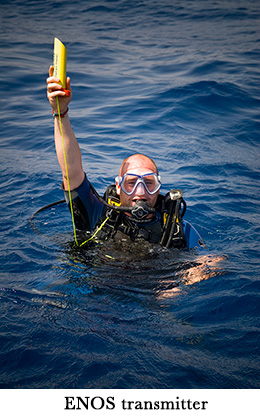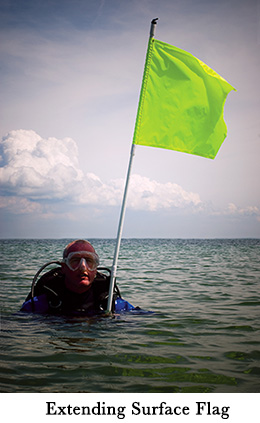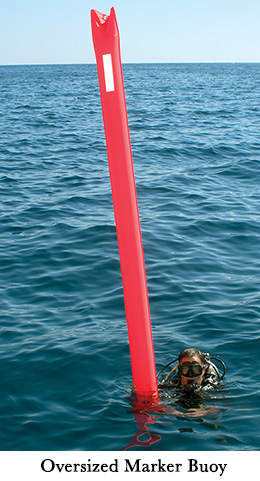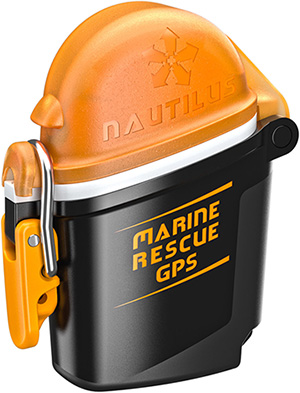Diver Safety Ė Itís Not Sexy!Contents of this Issue: Dewi Nusantara, Komodo, Indonesia Sick Divers, Macho Divemasters Flying After Diving, Researchers Need Your Help Gíday Mate, Do You Want A Lift? Underwater Statues and Sculpture Parks When Your Liveaboard Doesnít Go Where It Promised Stop Using Aqua Lung Powerline Inflators Immediately! Equipment Issues from our Readers When Great White Cage Dives Go Awry An American Immersion: The First Woman To Dive All 50 States Editorial Office: Ben Davison Publisher and Editor Undercurrent 3020 Bridgeway, Suite 102 Sausalito, CA 94965 but safety planning kills the angst from the November, 2016 issue of Undercurrent
Seatbelts in cars, helmets for motorcyclists, smoke detectors in homes -- none of these has been universally adopted by individuals except in those countries where they have been mandated by law. Why is that? They clearly save lives. Well, frankly, safety precautions are not sexy.
The Titanic set sail with insufficient lifeboats for the number of passengers it carried. Well, it was unsinkable, wasn't it? Divers might be slightly different, because whenever we break the surface after a serious dive, we have that momentary feeling of being alone in the ocean. In fact, we have abdicated our well being to the efficiency of those who are tasked with coming to find us. The foolhardy expect that task to be easy. They haven't considered how tiny a diver's head may look among the vastness of the ocean's waves. This scenario was encapsulated many years ago by six Japanese divers who got separated from their boat in Palau. There followed a massive sea search. One woman diver wrote on her slate, "We can see you searching but you can't see us." They found the slate attached to her body some days later. Safety is such a boring subject, but the two separate events concerning lost divers reported in Undercurrent in October might have made you change your mind. One of the first rules of safety at sea is to stay with your vessel, but we divers habitually jump off into the unknown. What steps do we take to make sure our surface support can find us easily? Rescue Devices? Not Always Many divers carry a bright orange or red safety sausage. Inflated, they can rise about a meter out of the water. In daylight, a boat operator with a high viewpoint and good binoculars can spot one about half a nautical mile away. The driver of an inflatable will be less able. Taller safety sausages are available, but rarely purchased by divers. Some divers carry an emergency flare in a watertight container, but if it works (and you never know until you try), it's a one hit wonder. Rescue dyes don't offer a panacea either. Their effect is soon dissipated in anything but a flat, calm sea. As for whistles, the noise generated by a vessel's engines, plus wind and waves, make them almost impossible to hear. A search party in a small boat would need to cut the engine and listen.
The Better Choice
Though of no value at night, a flag is a low-tech solution for daytime. A diver can lash a folded flag to his tank and deploy it single-handed. Some dive stores sell these flags, but they can also be found online at www.bowstonediving.com After the Sun Goes Down When a dozen divers went missing at the Elphinstone Reef in the Red Sea, they were finally discovered at night because some had dive lights. The divers lost at Malpelo in September carried no lights, although they went into the water late in the afternoon. They might have been luckier had they done so (two perished). So a fully charged dive light, carried and reserved for emergencies and not used routinely during the dive, should be part of every diver's kit -- and during a predive check, verifying that it functions properly should be as important as monitoring the air supply.
There is some concern that not all PLBs or small EPIRBs have sufficient power to send a signal to a satellite in the same way as a bigger EPIRB carried on ships and planes. You'll never know until you try! The Electronic Lifeline The Canadian Nautilus Lifeline is a portable device combining radio and GPS that dovetails with current international safety-at-sea protocols. It offers lost divers three rescue strategies: a marine VHF radio so that a diver can talk directly to the dive boat calling in the GPS position displayed, a localized emergency call-out, and a worldwide SARSAT satellite-activated rescue mission. If the diver fails to make contact with the dive boat, his second strategy is to put out a general distress call on Channel 16 in the hope that another vessel in the area will come to the rescue. While that program covers a lot of the world (though not yet much of the Pacific), it's unlikely there would be any rescue craft available in many remote locations. For example, the deaths in Malpelo (Undercurrent October 2016) reveal how tardy the Colombian authorities were in instigating a sea search for those missing divers. Early versions of the Lifeline required registering and receiving a specific Maritime Mobile Service Identity number, which is issued to all vessels using portable marine VHF radio licenses. Many Lifeline users just invent one to satisfy the paperwork, but that could mislead would-be rescuers if the operator inadvertently selected a number that actually was assigned to some other vessel's radio that was most likely in a different part of the world.
The diver/boat VHF radio feature was an excellent idea, but there are some licensing problems associated with the use of marine VHF in many parts of the world. Nautilus now has brought out a version, the Nautilus Lifeline Marine Rescue GPS, without the personal VHF radio feature and not needing MMSI registration. It's smaller than the original. Activating it sends both a GPS position back to your boat's marine radio and a man-overboard distress message to all AIS-equipped vessels within a 34-mile radius. The Automatic Identification System (AIS) is an automatic tracking system used on ships. But you must be diving where there might be such so-equipped vessels, and many of us dive in areas where other vessels are few and far between. Also, the onewatt output would not provide the 34-mile range. Furthermore, in many instances, the original Lifeline failed because the user failed to recharge it. The new Nautilus Lifeline Marine Rescue GPS has userreplaceable batteries said to be good for five years, obviating the need to constantly recharge it. It costs around $200. www.nautiluslifeline.com Seareq in Germany manufactures an autonomous diver locator system called ENOS. Divers carry a portable submersible signaling devices that relays to a tracking unit on the dive boat. The dive boat operator must invest in the system, which also requires installing an unobstructed aerial on the vessel's crosstrees. Generally, the ENOS system has been effective, but few vessel owners have been willing to make the investment. Safety is not sexy. All signaling devices, whether high-tech or lowtech, require that somebody knows you are missing. It still requires the dive boat to instigate a search. Operations that cut corners cut their spending on safety requirements first. You need to be able to trust your surface support crew. It has been alleged that, when it became necessary, the MV Maria Patricia, the Colombian dive boat that lost divers at Malpelo, carried insufficient fuel to look for them. |

I want to get all the stories! Tell me how I can become an Undercurrent Online Member and get online access to all the articles of Undercurrent as well as thousands of first hand reports on dive operations world-wide
| Home | Online Members Area | My Account |
Login
|
Join
|
| Travel Index |
Dive Resort & Liveaboard Reviews
|
Featured Reports
|
Recent
Issues
|
Back Issues
|
|
Dive Gear
Index
|
Health/Safety Index
|
Environment & Misc.
Index
|
Seasonal Planner
|
Blogs
|
Free Articles
|
Book Picks
|
News
|
|
Special Offers
|
RSS
|
FAQ
|
About Us
|
Contact Us
|
Links
|
3020 Bridgeway, Ste 102, Sausalito, Ca 94965
All rights reserved.

 "It's never going to happen to me." That's the
ever-optimistic sentiment of most people. You never
felt the need to have a fire extinguisher in your
home until it is ablaze.
"It's never going to happen to me." That's the
ever-optimistic sentiment of most people. You never
felt the need to have a fire extinguisher in your
home until it is ablaze. A two-foot (60 cm) bright yellow flag on an
extending pole can be seen from a far greater
distance than a safety sausage. The pole comes in
several sections of plastic tubing that slot together
and are held in place by an elastic cord that runs through the middle. Researchers at Heriot-Watt
University in the UK, who test many devices, found
that bright yellow was the most conspicuous color at
sea. Alister Wallbank, leading the team of researchers,
reported, "The folding flags were by far the
most reliable and, at about $25, cost-effective device
we tested, particularly the Day-Glo yellow [flag]. It
was consistently spotted at up to two nautical miles.
Yellow was the most conspicuous colour, even with
breaking wave crests, and could be located in deteriorating
light when it was impossible to
locate pennants of
any other color. Red
and orange flags
were located at up to
one mile. Two of our
observers who suffered
from degrees
of red/green colour
blindness, had difficulty
spotting these
colors, particularly in
intermediate light.
Not surprisingly, flags
were most easily located
when the search
heading was abeam
to the wind direction so that the pennant
presented the greatest
visible surface area."
A two-foot (60 cm) bright yellow flag on an
extending pole can be seen from a far greater
distance than a safety sausage. The pole comes in
several sections of plastic tubing that slot together
and are held in place by an elastic cord that runs through the middle. Researchers at Heriot-Watt
University in the UK, who test many devices, found
that bright yellow was the most conspicuous color at
sea. Alister Wallbank, leading the team of researchers,
reported, "The folding flags were by far the
most reliable and, at about $25, cost-effective device
we tested, particularly the Day-Glo yellow [flag]. It
was consistently spotted at up to two nautical miles.
Yellow was the most conspicuous colour, even with
breaking wave crests, and could be located in deteriorating
light when it was impossible to
locate pennants of
any other color. Red
and orange flags
were located at up to
one mile. Two of our
observers who suffered
from degrees
of red/green colour
blindness, had difficulty
spotting these
colors, particularly in
intermediate light.
Not surprisingly, flags
were most easily located
when the search
heading was abeam
to the wind direction so that the pennant
presented the greatest
visible surface area."  The same can be said for all electronic emergency
equipment. Many divers now carry a Personal
Locator Beacon (PLB) such as one of the McMurdo
Fastfind products, in a watertight case. Some of
these have been marketed as Emergency Position
Indicating Radio Beacon (EPIRB) but there is some
concern that not all have sufficient power to send
a signal to a satellite in the same way as an EPIRB
carried on ships and planes does. Safety and Rescue
Satellite-Aided Tracking (SARSAT) is an international
satellite system coordinated by the USA, Russia,
France and Canada as part of a two tier satellite system
that can relay an emergency message to a mission
control center via a ground receiving station.
This then forwards information to the appropriate
search and rescue center and local search and rescue
facilities.
The same can be said for all electronic emergency
equipment. Many divers now carry a Personal
Locator Beacon (PLB) such as one of the McMurdo
Fastfind products, in a watertight case. Some of
these have been marketed as Emergency Position
Indicating Radio Beacon (EPIRB) but there is some
concern that not all have sufficient power to send
a signal to a satellite in the same way as an EPIRB
carried on ships and planes does. Safety and Rescue
Satellite-Aided Tracking (SARSAT) is an international
satellite system coordinated by the USA, Russia,
France and Canada as part of a two tier satellite system
that can relay an emergency message to a mission
control center via a ground receiving station.
This then forwards information to the appropriate
search and rescue center and local search and rescue
facilities. A few liveaboards supply them to divers, but they
are expensive, so many don't.
When faced with refurbishing
cabins or providing safety
beacons, the former usually
has more marketplace appeal.
Safety isn't sexy.
A few liveaboards supply them to divers, but they
are expensive, so many don't.
When faced with refurbishing
cabins or providing safety
beacons, the former usually
has more marketplace appeal.
Safety isn't sexy.